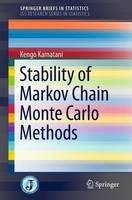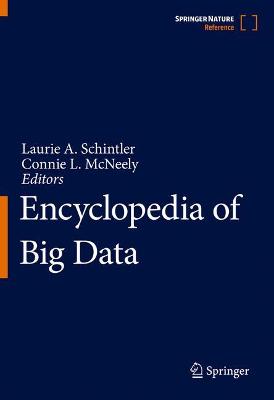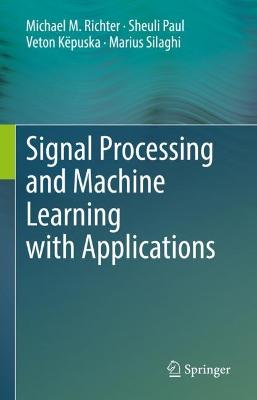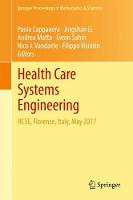Health Care Systems Engineering
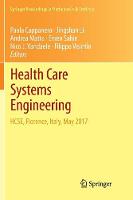 -15%
portes grátis
-15%
portes grátis
Health Care Systems Engineering
HCSE, Florence, Italy, May 2017
Visintin, Filippo; Li, Jingshan; Cappanera, Paola; Vandaele, Nico J.; Matta, Andrea; Sahin, Evren
Springer International Publishing AG
06/2019
300
Mole
Inglês
9783319881881
15 a 20 dias
492
Descrição não disponível.
1 V. Nicoletta et al., A Cardinality-Constrained Robust Approach for the Ambulance Location and Dispatching Problem.- 2 K. Hwang et al., A choice model for estimating realized accessibility: case study for obstetrics care in Korea.- 3 M. Di Mascolo et al., A decision-making tool for the calculation of a robust planning for Home Service employees.- 4 S. Yalcindag and A. Matta, A Decomposition Approach for the Home Health Care Problem with Time Windows.- 5 P. Landa et al., A Hybrid Simulation Approach to face/analyze patient boarding in Emergency Departments.- 6 H. Jang et al., A Location Problem for Medically Under-served Areas in Korea.- 7 N. Lahrichi et al., A New Decomposition Approach for the Home Health Care Problem.- 8 D. Miller et al., A practical approach to machine learning for clinical decision support.- 9 M. Koyuncu et al., A Simulation Model for Optimizing Staffing in the Emergency Department.- 10 K. Karubeet al., Analysis of Facility Layout in Elderly Day Care Facility.-11 D. Scheinker and M. Brandeau, Analytical Approaches to Operating Room Management: Projects at Lucile Packard Children's Hospital Stanford.- 12 Y. Chen et al., Appointment Overbooking and Scheduling: Tradeoffs between Schedule Efficiency and Timely Access to Service.- 13 C. Caprara et al., Crowding in Paediatric Emergency Department, a Review of the Literature and a Simulation-Based Case Study.- 14 M. Cildoz et al., Dealing with stress and workload in emergency departments.- 15 M. Painchaud et al., Discrete-Event Simulation of an Hospital Transportation Service.- 16 P. Cappanera et al., Empirical Data Driven Intensive Care Unit Drugs Inventory Policies.- 17 P. Mic and M. Koyuncu, Estimation of Case Numbers at Pandemics and Testing of Hospital Resource's Sufficiency with Simulation Modeling.- 18 G. Carello et al., Handling Time-Related Demands in the Home Care Nurse-to-Patient Assignment Problem with the Implementor-Adversarial Approach.- 19 A. Guinet, How to protect a hospital against cyber attacks.- 20 A. Roshanghalb et al., Identifying 'Hospital Effect' on Performances for their Improvements: The Case of The HF Administrative Data.- 21 J-Y. Yu and K-L. Huang, Improving Emergency Medical Services with Time-Region-Specific Cruising Ambulances.- 22 Mining the patient flow through an Emergency Department to deal with overcrowding.- 23 G. Ielpa el al., Outpatient Day Service Operations: a Case Study within Rheumatology Diseases Management.- 24 W. Abo-Hamad, Patient pathways discovery and analysis using process mining techniques: An Emergency Department case study.- 25 F. Schaefer et al., Patient-Bed Allocation in Large Hospitals.- 26 P. Cappanera and M.G. Scutella, Pattern generation policies to cope with robustness in Home Care.- 27 A. Stefanini et al., Service Reconfiguration in Healthcare Systems: the Case of a New Focused Hospital Unit.- 28 B Resta et al., Strategic Operations Management in Healthcare: a reference model for Cardiac Rehabilitation.- 29 J. Coton etal., User-centered development of an information system in patient's motor capacity evaluation.
Este título pertence ao(s) assunto(s) indicados(s). Para ver outros títulos clique no assunto desejado.
Health Care Management;Patient-centered Services;Clinical Pathways;Health Care Delivery Systems;Emergency Management Plan
1 V. Nicoletta et al., A Cardinality-Constrained Robust Approach for the Ambulance Location and Dispatching Problem.- 2 K. Hwang et al., A choice model for estimating realized accessibility: case study for obstetrics care in Korea.- 3 M. Di Mascolo et al., A decision-making tool for the calculation of a robust planning for Home Service employees.- 4 S. Yalcindag and A. Matta, A Decomposition Approach for the Home Health Care Problem with Time Windows.- 5 P. Landa et al., A Hybrid Simulation Approach to face/analyze patient boarding in Emergency Departments.- 6 H. Jang et al., A Location Problem for Medically Under-served Areas in Korea.- 7 N. Lahrichi et al., A New Decomposition Approach for the Home Health Care Problem.- 8 D. Miller et al., A practical approach to machine learning for clinical decision support.- 9 M. Koyuncu et al., A Simulation Model for Optimizing Staffing in the Emergency Department.- 10 K. Karubeet al., Analysis of Facility Layout in Elderly Day Care Facility.-11 D. Scheinker and M. Brandeau, Analytical Approaches to Operating Room Management: Projects at Lucile Packard Children's Hospital Stanford.- 12 Y. Chen et al., Appointment Overbooking and Scheduling: Tradeoffs between Schedule Efficiency and Timely Access to Service.- 13 C. Caprara et al., Crowding in Paediatric Emergency Department, a Review of the Literature and a Simulation-Based Case Study.- 14 M. Cildoz et al., Dealing with stress and workload in emergency departments.- 15 M. Painchaud et al., Discrete-Event Simulation of an Hospital Transportation Service.- 16 P. Cappanera et al., Empirical Data Driven Intensive Care Unit Drugs Inventory Policies.- 17 P. Mic and M. Koyuncu, Estimation of Case Numbers at Pandemics and Testing of Hospital Resource's Sufficiency with Simulation Modeling.- 18 G. Carello et al., Handling Time-Related Demands in the Home Care Nurse-to-Patient Assignment Problem with the Implementor-Adversarial Approach.- 19 A. Guinet, How to protect a hospital against cyber attacks.- 20 A. Roshanghalb et al., Identifying 'Hospital Effect' on Performances for their Improvements: The Case of The HF Administrative Data.- 21 J-Y. Yu and K-L. Huang, Improving Emergency Medical Services with Time-Region-Specific Cruising Ambulances.- 22 Mining the patient flow through an Emergency Department to deal with overcrowding.- 23 G. Ielpa el al., Outpatient Day Service Operations: a Case Study within Rheumatology Diseases Management.- 24 W. Abo-Hamad, Patient pathways discovery and analysis using process mining techniques: An Emergency Department case study.- 25 F. Schaefer et al., Patient-Bed Allocation in Large Hospitals.- 26 P. Cappanera and M.G. Scutella, Pattern generation policies to cope with robustness in Home Care.- 27 A. Stefanini et al., Service Reconfiguration in Healthcare Systems: the Case of a New Focused Hospital Unit.- 28 B Resta et al., Strategic Operations Management in Healthcare: a reference model for Cardiac Rehabilitation.- 29 J. Coton etal., User-centered development of an information system in patient's motor capacity evaluation.
Este título pertence ao(s) assunto(s) indicados(s). Para ver outros títulos clique no assunto desejado.


